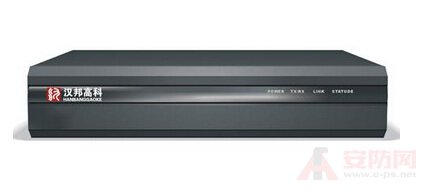Analysis of the top ten selling points of video servers
With the popularity of the Internet and the improvement of the network environment, network video surveillance has developed rapidly. The network of monitoring has become the development trend of the security industry. For network video surveillance, the video server is an important part of the whole system, which is analog video. The network transmission provides the core hardware, so what are the selling points of the video server?
With the development of science and technology, the development of network video server is also constantly improving. The core technology is an important foundation for the development of network video server. However, in order to meet the various needs of users, many related technologies need to be solved. The top ten selling points of video servers are as follows:

1, the operating system
In fact, the development of the operating system is a very difficult technical problem, listed as the core technology can not be overemphasized, but because of the difficulty, the development of the operating system on the DM642 is only too expensive for the development of video servers. Therefore, we recommend two options: (1) to purchase a third-party operating system from TI. There are already TI third parties available to provide the Linux operating system on the DM642. But the details are not clear.
2, use the BIOS provided by TI
The BIOS is a small core that provides the most basic functions of the operating system, and users can develop applications on it. But relatively speaking, development and debugging will be more difficult.
3. Access control of network video server resources
In order to meet the actual needs of monitoring, it is generally necessary to add serial port, alarm I/O, hard disk and other resources on the video server. Because the network is not *, how can these resources be unified*, timely and efficiently? Control access is a very important issue.
4, NAT problem
Because the actual conditions of the network vary widely, and the user's needs are various, it is easy to encounter problems in the same system between the local area network and the Internet. At this time, how to solve the problem of converting the intranet address and the extranet address in the gateway must be considered. It is generally difficult to provide a unified solution for every situation, so developers need to define several solutions for the most common network conditions for users to choose.
5, audio and video synchronization
Because of the inherent characteristics of network transmission, voice data and video data cannot be uniform from the network video server to the client. If the client does not perform any correction processing, it is difficult to ensure the synchronous output of audio and video. The time stamp information can be embedded in the data packet, and the client determines the appropriate playing time of the media data based on the information. At the same time, it should be emphasized that the video data is the image of one frame and one frame at the end, that is, it can be regarded as an isolated point on the time axis of the play, and the audio data is a piece of data, that is, on the time axis of the play. It is considered to be continuous, so the timing of simultaneous playback of the two media is different.
6, dynamic IP
Since many users are now dial-up, the IP of the video server is dynamic in this case. How the client knows the IP of the video server to be monitored in time is a problem that must be solved. We have defined a set of CDDNS protocols. After the video server is started, it will periodically register its own information with the CDDNS server according to the CDDNS protocol. The user can obtain the IP of the video server by querying the CDDNS server.
7, moving target detection
Many scenes during monitoring are usually stationary, and users are expected to be notified once they have a moving target. When developing the detection algorithm, the selection of the detection threshold is a special problem to be studied. It is necessary to consider the noise of the camera, the illumination of the scene, the size and speed of the moving target, and the like.
8, file system
Some video servers have local storage capabilities, which can effectively prevent the loss of important data when the network is faulty. Considering versatility, developers are advised to choose a mainstream file system. When implemented on the DM642 platform, we have implemented the FAT32 file system with the support of TIBIOS. It has been proven to be stable* and users are happy to accept it. If the developer can run a successful operating system, the file system is simple and can be considered separately.
9, automatic dialing
This is a problem related to dynamic IP. It is listed separately because the problem is completely irrelevant to CDDNS. Developers need to develop their own dial-up protocols such as pppoe.
10, file storage format
General developers should develop two file storage formats: proprietary and generic. For users who emphasize confidentiality, they should generally provide a dedicated storage format. It is easier for developers to achieve confidentiality through unpublished file formats. For users who emphasize ease of use, data should generally be stored as an AVI file and then provided with user-installable plug-ins.
Tool chests are equipped with heavy duty ball bearing slides and you can put them on roller cabinets.
Side Tool Cabinet,Rolling Tool Chest,Heavy Duty Tool Box,Tool Storage Chests
Changzhou Xingsheng Tianhe Electric Appliance Co., Ltd , https://www.roller-tool-cabinet.com
